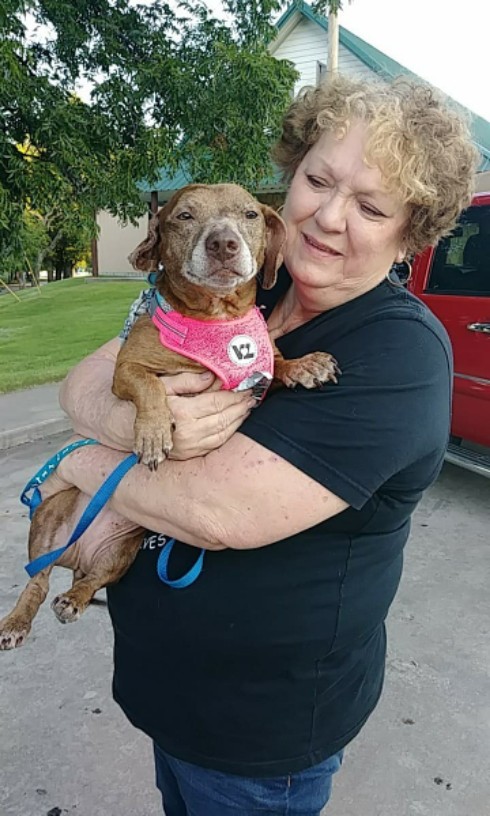Every week in the United States, there are hundreds if not thousands of volunteer animal rescue transporters moving animals safely to their destinations. These road warriors are the distribution network for local animal shelters and animal rescues across the country yet they are still the unsung heroes facing criticism at every turn.
Here are the top 4 reasons why people seem to love to hate animal rescue transport…and why we think they are bunk!
Reason 1: Animal rescue relay transport is inefficient
Definitely the most often cited reason for not embracing volunteer rescue relay transport is that it’s inefficient. “We need to move 30 animals at a time,” is a common retort from personnel at the animal shelter. Yes it’s true that volunteer transporters using their own cars and planes cannot move 30 animals at a time (unless they’re puppies or kittens) so in mass disaster situations where there are 30 animals needing to move at the same time volunteer transport may not be the best choice. But for normal animal shelter operations, it’s a great alternative to having to intake 30 animals at a time and it can be amazingly efficient. Instead of pulling out all of the stops, bringing in all of your staff and organizing your animal shelter like a field hospital ready to receive mass intake on the day your 30 dog transport arrives, volunteer transport delivers you 3-4 animals at a time. This volume allows for no change to your animal shelter operations. You can keep doing what you’re doing because the intake of 4 animals won’t break the mold. So we’d argue that rescue relay transport is actually more efficient given the reduced strain on your facilities.
Reason 2: Volunteers are unreliable
 Those darn volunteers, always causing the local animal shelters such grief. They’re not reliable so why bother. This is a common belief among those animal welfare organizations that do not have effective transfer programs. In our opinion this is a mass stereotype and it conveys the attitude of the animal shelter towards working with volunteers. What volunteer would want to help out a local animal rescue that treats them like crap? Yes, we acknowledge that sometimes there are volunteers that are not the most reliable. Kinda like employees but we won’t go there. Keep in mind the motivation that the volunteers have. They want to feel like they are making a difference and helping animals at the same time. They are looking for a way to fuel their passion for animals without having to make a life-long commitment. What better way to get engaged than doing a periodic rescue relay transport. They can choose the frequency of their involvement and with services like Doobert.com, they get to opt-in to the transports they want to help with. Then, if the animal shelter is engaging and following up to provide updates as the transport comes together, and sends along pictures and the backstory of the animals needing to be transferred, the volunteers will be even more motivated to fulfill their commitments. Our take is that the volunteers that are unreliable are the ones that the animal shelters don’t engage. There’s no communication to them, no updates or feedback and just an expectation that weeks out they’ll remember to show up at the designated spot. That’s a lot to ask when they’re doing you the favor. Engage them and we think you’ll see just how reliable they can be!
Those darn volunteers, always causing the local animal shelters such grief. They’re not reliable so why bother. This is a common belief among those animal welfare organizations that do not have effective transfer programs. In our opinion this is a mass stereotype and it conveys the attitude of the animal shelter towards working with volunteers. What volunteer would want to help out a local animal rescue that treats them like crap? Yes, we acknowledge that sometimes there are volunteers that are not the most reliable. Kinda like employees but we won’t go there. Keep in mind the motivation that the volunteers have. They want to feel like they are making a difference and helping animals at the same time. They are looking for a way to fuel their passion for animals without having to make a life-long commitment. What better way to get engaged than doing a periodic rescue relay transport. They can choose the frequency of their involvement and with services like Doobert.com, they get to opt-in to the transports they want to help with. Then, if the animal shelter is engaging and following up to provide updates as the transport comes together, and sends along pictures and the backstory of the animals needing to be transferred, the volunteers will be even more motivated to fulfill their commitments. Our take is that the volunteers that are unreliable are the ones that the animal shelters don’t engage. There’s no communication to them, no updates or feedback and just an expectation that weeks out they’ll remember to show up at the designated spot. That’s a lot to ask when they’re doing you the favor. Engage them and we think you’ll see just how reliable they can be!
Reason 3: It’s too stressful on the animals
 The next reason that we hear too often is that rescue relay transport is just “too stressful on the animals.” Really? More stressful than being in a shelter? More stressful than being crammed into a shelter van and driven non-stop for 8 hours? Sorry but we beg to differ here. Companion animals are social, sentient beings that need to be engaged. What better way for them to have their lives enriched than to be engaged by passionate and loving volunteers along a rescue relay transport? At every stop (about an hour or so) they get to go potty, meet new people and experience life as it was meant to be. Everyone loving, petting and showering them with affection. Isn’t that the definition of stress reduction?
The next reason that we hear too often is that rescue relay transport is just “too stressful on the animals.” Really? More stressful than being in a shelter? More stressful than being crammed into a shelter van and driven non-stop for 8 hours? Sorry but we beg to differ here. Companion animals are social, sentient beings that need to be engaged. What better way for them to have their lives enriched than to be engaged by passionate and loving volunteers along a rescue relay transport? At every stop (about an hour or so) they get to go potty, meet new people and experience life as it was meant to be. Everyone loving, petting and showering them with affection. Isn’t that the definition of stress reduction?
Reason 4: You should focus on saving locally, not out of state
The final reason people love to hate animal rescue relay transport is more of a philosophical one. The idea being that if everyone focused on saving animals in their local community instead of transporting them from one community to another that we’d all be more successful. In our view this is a myopic view of the world and we believe that together, we are stronger. Of course we agree that volunteers should work within their local community to help the animal shelters and rescues. The most effective programs are community driven where everyone plays a part. But why can’t transfer be a part of the solution? We agree it shouldn’t be the only option, but we disagree in that it shouldn’t be an option. Sometimes the best way to get on top of solving your problems is to reduce the size of the problem by partnering with other organizations to take some of the load while you get your operations and procedures in place to make lasting change.
Have you heard of a reason to NOT do animal rescue relay transport? Tell us so we can help debunk it!












